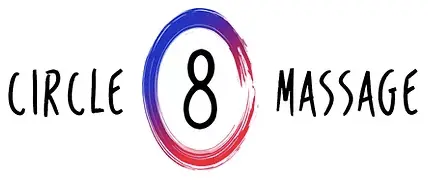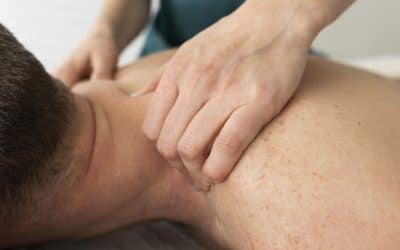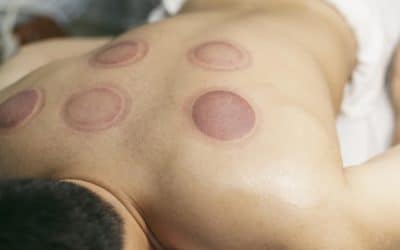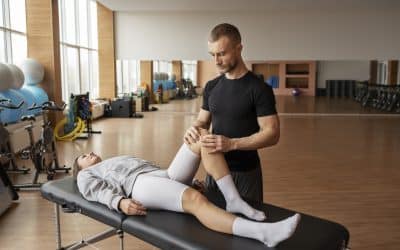Updated 29/10/2023
Sports massage offers a wide range of benefits. For one thing, it can help you feel better and improve your athletic performance, improve flexibility, boost circulation, and speed up recovery time after a sports injury.
However, these benefits shouldn’t make you run out to book a sports massage appointment. There are some considerations you should be aware of before getting a sports massage. Otherwise, you could end up wasting hard-earned money and potential pain.
In this article, we’ll review what sports massage is and the things you need to know before getting a sports massage.
What is Sports Massage?
Sports massage is the manual manipulation of the muscles to help those who have physically demanding hobbies or who are professional athletes. This kind of treatment focuses on the impact of certain activities on certain joints, muscles, tendons, ligaments, and soft tissues.
This kind of massage uses certain massage techniques that support further physical activity. An initial assessment is done to create a therapy plan that meets the needs of each individual athlete.
Sports massage carries certain benefits, including:
- Relaxation
- Recovery
- Removal of toxins
- Enhance athletic performance
- Improved sleep
Athletic massage is for anyone who is physically active, including:
- Those who are new to fitness
- Amateur athletes
- Dedicated athletes
With this quick overview of sports massage, you can see that these techniques can bring major benefits to anyone who participates in fitness and sports.
In the next sections, we’ll take a look at what to consider before booking a sports massage appointment.
Tips to Consider Before Getting a Sports Massage
1. Research About Sports Massage
Before getting a sports massage, it’s beneficial to have some basic knowledge about what it is. With a basic understanding of sports massage, you’re making a more informed decision about whether this is the right therapy for you or not.
Sports massage can be customised for athletes who have specific requirements and goals. However, the massage techniques used are targeted to improve athletic performance, reduce recovery time, and prevent future injuries.
So, consider the reason you’d like to get a sports massage before making an appointment. Is this the right therapy for you?
2. Learn About the Different Types & Styles of Massage
As with other forms of massage, there are different types of sports massage, each bringing its own benefit. Here are some to consider:
- Pre-event: helps loosen up muscles for better athletic performance
- Post-event: relaxes muscles and speeds up recovery process & time
- Restorative: helps reduce the risk of injury, even when a person is pushing themselves harder during the training process
- Rehabilitative: is specially designed for alleviating pain, treating injuries, and keeping the body in good form
Before making an appointment, it’s essential to understand the differences between each type of massage and what you can expect from the massage therapist.
So, choose the technique that will best meet your specific needs.
3. Find Out If the Massage Studio is Accredited
You’ll find that many spas are well-designed and offer beautiful, calming settings designed to attract athletes. That’s well and good; however, not all of these massage studios are accredited. It’s essential to avoid falling prey to non-professional massage therapists. Doing so could mean you end up with poor results or even injuries.
So, do some research to know if a studio is accredited before making an appointment. And ensure your therapist has the right certification before getting on that massage table. For instance, a massage therapist may belong to the Society of Sports Therapists (SST), an organisation that was established in 1990. Membership is at the graduate level through a Society accredited degree program. Therapists with this certification will know what they’re doing.
For instance, in the UK, search for sports massage studios that have been accredited by the Federation of Holistic Therapists (FHT). Another important accreditation for massage studios is the Professional Standards Authority. These associations ensure their members follow certain standards in the massage and treatment of patients.
So, do your research to find a massage studio that is accredited to ensure you receive the right therapy from a professional massage therapist.
4. Sports Massage is Different From a Spa Treatment
Some people make the mistake of believing a sports massage is for relaxation and leisure like you’d receive at a spa treatment. However, sports massage is quite different.
A sports massage requires you to work with the therapist in moving and stretching throughout your massage session.
5. Make Sure You’re Hydrated Before Arriving
Some people believe they’ll be hydrated after a sports massage. However, this is only a myth and is not reality. The fact is that you’ll feel pain and discomfort from stiffened muscles if you’re not well-hydrated before a massage session.
So, make sure to drink plenty of water before your sports massage appointment.
6. Soreness is Normal
In most cases, you will feel some soreness after a sports massage. This is normal after a massage session and is not necessarily an indication that something is wrong. It’s pretty normal to have discomfort after a sports massage.
The good news is that the soreness usually subsides in less than 48 hours after your session.
7. Avoid Heavy Meals
Make sure to avoid a heavy meal before heading to your sports massage appointment. This is for your benefit and keeps you from feeling more discomfort when you need to move or lie face down on the massage table.
In addition, massage slows down metabolic processes such as digestion. So, to avoid feeling digestive discomfort on the table, eat light before your appointment and avoid heavy meals.
8. Put on Your Underwear
You’ll be required to remove your shirt and pants during a sports massage. So, it’s best to put on undergarments before your appointment with the sports massage therapist.
You can also request a sheet or towel to make you feel more comfortable.
Anyone Can Benefit from Sports Massage
Most people believe that sports massage is meant for athletes only; however, that’s not the case. While some techniques are specially designed for these individuals, sports medicine can be beneficial if you’re experiencing chronic pain or you’ve been injured.
So, don’t hesitate to consult a sports massage therapist to make inquiries about techniques that are suitable for your condition.
FAQs
How long does a sports massage typically last?
A sports massage session usually lasts between 60 to 90 minutes, depending on your needs and preferences.
Are sports massages only for athletes?
While sports massages were initially designed for athletes, anyone can benefit from them, especially if you have muscle tension, stress, or physical discomfort.
Can I request a specific type of massage?
Yes, you can. Depending on your goals and requirements, you can request a pre-event, post-event, restorative, or maintenance sports massage.
Is it normal to feel sore after a sports massage?
Mild soreness can be normal, especially if you had muscle tension or knots. It typically goes away within a day or two.
How often should I get a sports massage?
The frequency of sports massages depends on your individual needs. Some athletes get them weekly, while others opt for monthly sessions.
Do I need to undress completely for a sports massage?
Your level of undressing is entirely up to your comfort. Many people choose to undress partially or wear comfortable clothing during the massage.







